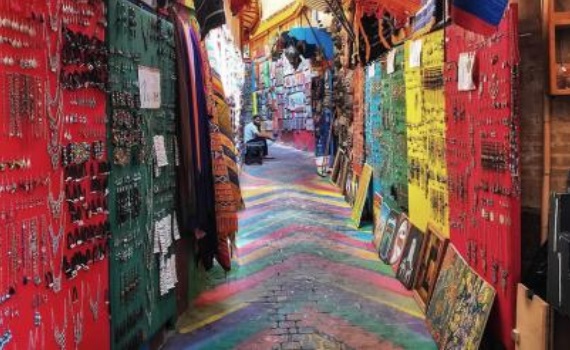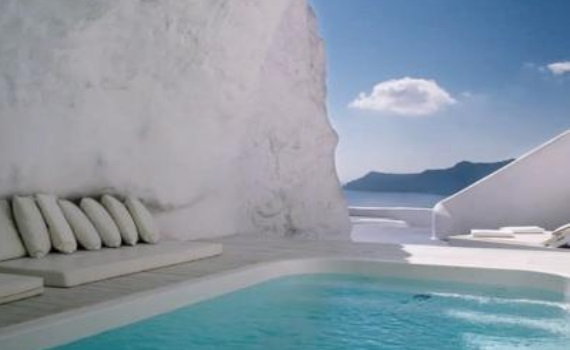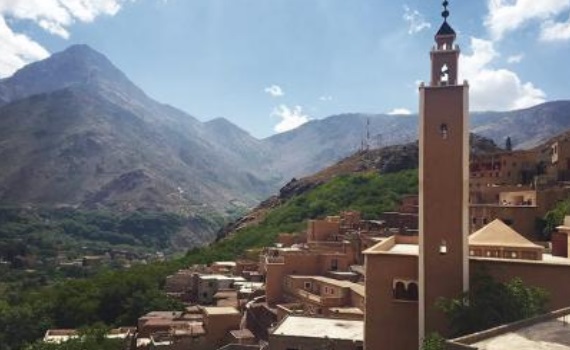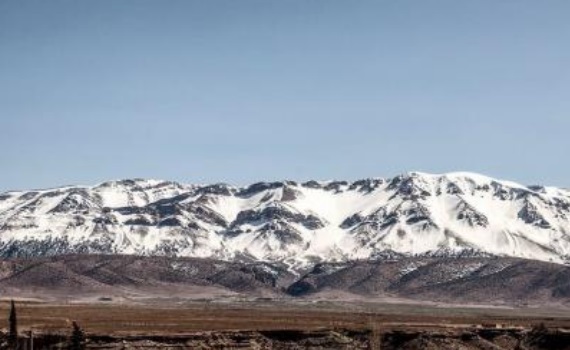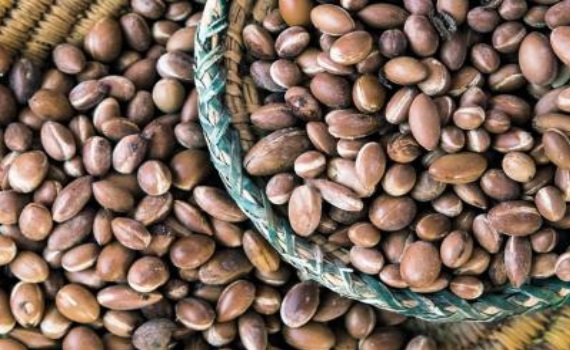QUICK DISCOVERY OF MOROCCO
UNESCO HERITAGE
The 9 classified wonders of the Kingdom:
Medina of Fez date of registration: 1981:
Founded in the 9th century and home to the oldest university globally,
Fez is at its peak when it supplants Marrakech as the capital of the Kingdom. The urban fabric and the important monuments of the medina date back to this period: madrasah, fondouks, palaces and residences, mosques, fountains. Despite the transfer of the capital seat to Rabat in 1912, it retains its status as the country's capital cultural and spiritual life.
As a result, the medina of Fez is considered one of the largest and best-preserved historic cities in the Arab-Muslim world.
The delimitation of the property inscribed on the World Heritage List includes all the urban fabric and walls. Therefore, the surroundings of the medina are an essential element for the quality of the visual aspect of its environment and must be maintained as non-building areas
La délimitation du bien inscrit sur la liste du patrimoine mondial inclut tout le tissu urbain et murailles. Les abords de la médina sont un élément indispensable à la qualité de l’aspect visuel de son environnement et doivent être maintenus comme zones non constructibles.
Medina of Marrakech Date of registration: 1985:
Marrakech once gave its name to the Moroccan Empire. Founded in
1070-1072 by the Almoravids, Marrakech is home to many masterpieces (ramparts and monumental gates, Koutoubia mosque, Saadian tombs, ruins of the Badiâ palace, Bahia Palace, Menara basin, and pavilion). Jamaâ El Fna Square, an authentic open-air theater, always amazes its visitors.
In the 700 hectares of the Medina, the old habitat, which has become vulnerable due to demographic change, represents its network of alleys, houses, souks, fondouks, traditional craft, and commercial activities, an outstanding example. Of the historic living city.
KsarAït-Ben-Haddou Date of registration: 1987:
A set of earthen buildings surrounded by walls, the ksar is a type of traditional pre-Saharan settlement. Houses cluster within its defensive walls reinforced by corner towers. Aït Ben Haddou, located in the province of Ouarzazate, is a striking example of the architecture of southern Morocco. The materials used for construction remain earth and wood. For its restoration, only a few reinforced concrete lintels andframes were concealed under earthen plaster. Attention is also paid to doors and windows opening onto the alleys to ensure that metal replaces wood.
The historic city of Meknes Date of registration: 1996:
The historic city of Meknes exerted a considerable influence on the development of civil and military architecture (the Casbah) and works of art. Founded in 1061 by the Almoravids as a military establishment, it takes its name from the great Berber tribe Meknassa, which dominated eastern Morocco until Tafilalet in the Century City. It contains the remains of the medina, which testify to the ancient socio-economic fabric and the imperial city created by Sultan Moulay Ismail (1672-1727). Under the high defensive walls, pierced by nine monumental gates, are important monuments, including twenty-five mosques, hammams, palaces, vast granaries, vestiges of fondouks (hotels for merchants), and private dwellings, testimonies of the Almoravid, Marinid, and Alaouite periods. Meknes is distinguished by the gigantic and voluminous appearance of its ramparts, which are 15m high.
Medina of Tetouan Date of registration: 1997:
The strategic position of the Medina of Tetouan opposite the Strait of Gibraltar has played an essential role as a point of junction and transition between two civilizations (Spanish and Arab) and two continents (Europe and North Africa). The city was rebuilt by Andalusian refugees who came to this region after being driven out by the Spaniards. This is why Andalusia has strongly influenced the style of architecture and art. It is one of the smallest Moroccan medinas but without a doubt the most complete. The wall surrounding the medina stretches for 5 km. Access is through seven doors connected and gives access to monuments of collective interest such as fondouks, mosques, zaouïas, and neighborhoods intended for crafts and commerce, and secondary roads that lead to dead ends and residential blocks constituting semi-private spaces.
Volubilis Archaeological Site Date of Inscription: 1997:
The archaeological site of Volubilis is a prime example of a city witnessing an exchange of influences from ancient times until the arrival of Islam. All the phases of a ten-century occupation are represented: the Mediterranean, Libyan and Moorish, Punic, Roman, and Arab-Islamic culture, and African and Christian culture. The site covers 42 hectares between Zerhoun and the Gharb plain. It is materialized by a Roman rampart built-in 168-169 AD. Due to its isolation and has been unoccupied for nearly a thousand years, it exhibits a high level of authenticity. In addition, the site has yielded considerable artistic documentation, including mosaics, marble statues, and hundreds of inscriptions..
Medina of Essaouira Registration date: 2001:
The medina of Essaouira, formerly known under the name of Mogador (name coming from the Phoenician word Migdol which means "small fortress"), is a remarkable and well-preserved example of the fortified port city of the middle of the XVIIIth century with strong European inspiration, transposed in a North African context. The Essaouira medina was designed by a French architect deeply influenced by the work of military engineer Vauban in Saint-Malo. It still retains today the aspect of a European city inseparable from the medina. , The archipelago of Mogador includes many cultural properties and natural sites of outstanding universal value.
The Portuguese town of Mazagan Listing date: 2004:
The Portuguese fortifications of Mazagan, which today form part of the city of El
Jadida, 90 km southwest of Casablanca, were built as a fortified colony on the
Atlantic coast at the beginning of the 16th century taken over by the Moroccans in 1769. The fortifications, with their bastions and ramparts, constitute an early example of Renaissance military architecture.
The Portuguese buildings that still can be seen are the cistern and the Assumption
Church, built in the Manueline (late Gothic) style. The Portuguese fortifications of Mazagan, built in two phases (1510-1514 and 1541-1548), are imposing. They have retained their original structure and architectural homogeneity to this day. The emblematic monuments (ramparts, bastions, cistern, churches) are well preserved.
RABAT 9th Moroccan site listed as World Heritage of Humanity:
Last June, the capital of the Kingdom joined the 8 Moroccan sites inscribed on the UNESCO World Heritage list. The World Heritage Committee, meeting in Saint Petersburg, unanimously decided on June 29 to inscribe the site "Rabat, modern and historic capital: a shared heritage" on the World Heritage list.
Rabat's candidacy did not require a vote; the decision of the 21 members have applauded the decision to register it while "congratulating Morocco for presenting an exemplary site." In the declaration of "exceptional universal value" concerning the Moroccan site, the world committee notes that Rabat, a modern city, "embodies pioneering town planning, conserving historical monuments and traditional housing.
The Rabat site includes 6 components spread over 3 districts: "The Garden of Essay and the Historical Gardens," "The Medina," "The Kasbah of the Oudayas," "the ramparts and the Almohades Doors," and the "Archaeological Site of Chellah."
CLIMATE OF MOROCCO
The Moroccan climate is Mediterranean and Atlantic, with a dry and hot season coupled with a cold and wet season, the end of the burning period is marked by the October rains. The presence of the sea reduces temperature variations, tempers the seasons, and increases the humidity of the air (400 to 1000 mm of rainfall on the coast).
In the interior, the climate varies depending on the altitude. Summers are hot and dry, especially when the scorching sirocco or the chergui blows, a summer wind blowing from the Sahara.
In this season, the average temperatures are 22 ° C to 24 ° C. Winters are cold and rainy with frost and snow. The average temperature then changes from - 2 ° C to 14 ° C and can drop to - 26 ° C. In mountainous regions, the precipitation is very high (more than 2000 mm of rainfall in the Rif or 1800 mm in the Middle -Atlas). Pre-Saharan and Saharan Morocco have a desert climate.
PATRIMONY
The architecture route:
A crossing of the country to meet the riches of Moroccan heritage. The Kingdom's fascinating history is etched in every stone from north to south, east to west.
Casablanca : The imprint of the twentieth century
On the Atlantic coast, Casablanca is the showcase for the best in architecture in the 1920s. Many Art Deco buildings are located on Boulevard Mohammed V and in the former European district of Mers Sultan. However, in striking contrast, Casablanca knows how to stay at the forefront of modern architecture, notably the Twin Center, housing offices, and a shopping center several stories high.
Hispano-Moorish style in Tetouan:
On the shores of the Mediterranean, in the heart of the Medina of Tetouan, discover the multi-story buildings of the colonial district of El Ensanche. The medina is full of these houses decorated with wrought iron in the European style. This is a characteristic that can be found in the land of Chefchaouen.
Muslim influence in Fez:
Further south, Fez. Here, the medina and its innumerable treasures are classified as World Heritage of Humanity by Unesco: doors, fountains, palaces, mosques, caravanserais, madrasas (Koranic schools) ... Zelliges, stucco, woodwork sincerely mark the city as in an open-air museum.
Berber tradition in the great south:
Discover the valleys of the Great South and the wonders of the Berber tradition. This is expressed architecturally through many kasbahs, citadels built in adobe, ksour, fortified villages, and Agadir, collective granaries. However, the greatest concentration is in the Dades valley, also nicknamed the "valley of 1000 kasbahs".
MOROCCO, LAND OF CINEMA
Morocco, a name that evokes the Cherifian palaces surrounded by sumptuous gardens, the souks from which escapes the mysterious smell of spices, fantasia, and its dazzling rites.
But it would be a shame to stick to this colorful theater setting. What is essential in Morocco is what happens behind the scenes. Thus, in a medina, it is by leaving the widest streets that one will immerse oneselfin the famous life of Morocco,
then by going the alleys to reach dark dead ends that one will find the most beautiful doors. of the city, those behind which flourish the most luxurious palaces… Likewise, it is by respectfully going to meet people that you will discover the real Morocco: The country will let you glimpse its deepest secrets.
Finally, Morocco is also a succession of superb and varied landscapes, oscillating between coastal environment, mountainous terrain (with sometimes snow-capped peaks), green valleys, fertile plains, desert plateaus, and oases.
Located in northwest Africa, its long coastline overlooking the Atlantic Ocean ends beyond the Strait of Gibraltar into the Mediterranean.
of Morocco is the Sahara.
To the east and south-east, Morocco borders Algeria. A short distance from the Atlantic coast lies the Canary Islands and Madeira. North of the
Strait of Gibraltar in Spain.
The administrative capital of Morocco is Rabat. Among the remarkable large cities are Casablanca, Agadir, Fez, Marrakech, Meknes, Tetouan, Tangier, Oujda.
The highest peaks in North Africa:
The mountains occupy more than two-thirds of Moroccan territory and reach significant heights. Several peaks cross the 4000m mark. For example, Jbel Toubkal, the highest peak in the country, rises to 4,167 m. Morocco contains four main mountain ranges, and it is the only Maghreb country to have a vast Atlas mountain range.
First, in the north of the country, the Rif mountains or djebels border the Mediterranean. The highest peak of the Rif, DjebelTidirhine, reaches 2,456 m. The Rif offers varied surfaces depending on the altitudes of its regions. We find primarily thorny vegetation (firs, pines, and cedars). On the other side, arid steppes and scrublands grow, and even further east, we find hemp, which is not harvested. Further from the Mediterranean shores and further inland are three other large chains: the Middle Atlas, the High Atlas, and the Anti-Atlas, where once again a diversity of landscapes can be found.
The Middle Atlas, Morocco's "water castle," is separated from the Rif by the arid plains of the east and fertile of the west. The famous Tazagap separates the two chains.
FLORA RICH IN VARIETY, MEDICINAL AND RARE
Moroccan flora has around 7,000 known species. Vascular flora is heavily represented in forest ecosystems where nearly two-thirds of species live; the remaining third is divided mainly between steppe formations and humid biotopes. The mountainous regions of the Rif and the Atlas are the most critical sectors in terms of endemism.
Moroccan forest formations, like Mediterranean forests, are made up of very heterogeneous species, often transparent and with very diverse structures.
These formations are primarily state-owned and cover an area of approximately 9,038,000 ha or 12.7% of the national territory. Moroccan forests are made up of natural deciduous forests (green oak, Cork oak,Tauzin oak, Arganier, Carob tree, Acacias, etc.) and conifers (Atlas cedar, Berber thuja, Aleppo pine, Maritime pine, Black Pine, Thuriferous
Juniper, Red Juniper,…), distributed between the different bioclimatic stages from semiarid to humid. Thuja, the cedar occupies the mountain areas in the Middle Atlas, and the Rif, Les Chênaies inhabit the mountain plains and foothills, while the only Sapinière in
Morocco finds refuge Talasemtane in the altitudes of the western Rif near Chefchaouen. In the southwest, the Arganeraie occupies semi-arid and arid areas west of High Atlas and the Anti-Atlas. Further south, the Acacias constitute pre-steppe and pre-forest climaxes in regions with arid and Saharan bioclimates.
The argan tree:
The argan tree has thorny branches - hence its name Spinosa, which means "thorny" - 8 to 10 m high, with leaves attenuated in a short petiole, very resistant, and which can live from 250 to 300 years.
The argan tree provides a thorny wood, called ironwood, which is mainly used as firewood.
The Argan tree produces a fruit, Affiche, which is in the form of a false oval drupe containing a tough nut sheltering two or three "almonds," It takes about 38 kg of fruit (affiche) or 2.6 kg of almonds to produce 1 liter of Argan oil.
Argan oil extracted from the argan tree's fruit is well known for its pharmacological properties and has been used in traditional medicine for centuries..Atlas pistachio:
The Atlas pistachio is a beautiful tree with deciduous leaves providing high nutritional value fodder for the livestock. It exists in a scattered state in the Highlands region (Djelfa, Messâad), south of Laghouat and Ghardaia (Berriane and Guerrera). This tree can reach imposing dimensions. Some authors suggest that the Atlas pistachio can live up to 1000 years.
Its pea-sized fruit is edible. It is called El Khouri (green) by the local population because of the predominance of the dark green color when fully ripe.
From this fruit can be extracted a high-calorie oil which is kneaded with dates and consumed with milk. In addition, Rosin, which exudes naturally in heat, can be removed from its bark, used medicinally.
Berber thuja:
The Berber Thuja is a tree of the coniferous family, close to the cedar, which grows in Morocco, precisely in the Atlas mountains (Essaouira, Azemour, Idaoutanane, etc.). It is a slow-growing species, 6 to 8 m at 60 years, with a very long lifespan (400-500 years).
The rare, aromatic, and dense thuja wood is unique among all other types of exotic wood.
Unique and luxurious, it is a hardwood recognizable by its dark red color speckled with groupings of small dark brown dots and sometimes with golden-colored vein patterns. The qualities relating to this wood are its hardness, rarity, the hundreds of textures it presents, the luxury of its appearance, the stunning polish it shows after polishing, and finally, the beautiful, almost aphrodisiac smell of this exotic wood.
The Oaks :
If left to live, oak easily exceeds 500 years and up to 1000 years or more, exceptionally.
Oaks are hardwood trees. In Morocco, we can find several species of oaks, the individuals of which are sometimes several hundred years old.
Oaks: green, Zeen, Tauzin, and cork
Holm oak:
In Morocco, the holm oak is the first forest species by its surface (1,415,201 ha), fuelwood production, and foliar biomass (all organic matter consisting of tree leaves or any other plant). ).
In addition, its ecological and socio-economic roles are critical everywhere. Present in all the non-arid regions of the country, it is described as “the living cement that links the forest massifs.” It is a tree 5 to 25 meters high that grows slowly and lives a very long time (200 to
2,000 years).
Cork oak:
Small in size, the cork oak tree rarely exceeds 20 meters. This is a typically Mediterranean species. Although this tree can live 150 to 200 years, even 800 years, and reach 20 to 25 m high (the largest having reached 43 m), it usually does not exceed 12 to 15 m.
Le chêne-liège :
De petite taille, le chêne-liège ne dépasse que très rarement les 20 mètres. Il s’agit d’une espèce typiquement méditerranéenne. Cet arbre peut vivre 150 à 200 ans, voire 800 ans et atteindre 20 à 25 m de haut (le plus grand ayant atteint 43 m), ne dépasse généralement pas 12 à 15 m.
Tauzin oak:
Tree 5 to 20 meters high, irregular shape branching from the base but eventually losing its lower branches.
Its bark is smooth, grayish-green, then dark gray, hence its nickname black oak. Its longevity can reach 500 years. It hybridizes readily with other oaks.
Zeena oak:
It is a tree that can reach over 30 m in height, and the circumference of its trunk can exceed 6 m. Its bark, gray-brown in color, is smooth during the first years then cracks quickly.
Its foliage often persists in a parched state until new leaves appear (it is said to be marcescent). It can live more than 200 years. At first, its growth is slow, and it does not begin to bear fruit until around fifteen years old.
Fruiting is annual.
The arbutus:
An ericaceous plant that often accompanies oak forests gives a sweet, fleshy fruit with a granular structure, called Boukhannou, Bakhennou, or even Sasnou (Be careful, consume in moderation).
Hawthorn:
Hawthorn, which occurs in thorny trees or shrubs, produces edible red berries called "Bousrouroud" in the Moroccan dialect.
Atlas cedar:
Several provenances (subspecies) live in mountainous areas between an altitude of 1500 and 2500 m. The landscape architecture of the Rif, Middle Atlas, and High Atlas mountains is primarily shaped by forest ecosystems organized by the Atlas cedar.
When well preserved, these ecosystems stand out in the landscape by their extent, by the trees' height, beauty, and majestic port, slender in some valleys exceeding 65 m in height.
Conversely, the very degraded and water-repellent cedar groves in areas with marginal ecological conditions offer a landscape of great desolation.
The chestnut:
The chestnut tree is majestic (25-35 m, which can measure 4 meters in diameter at the base); it has a very long lifespan of 500 to 1500 years.
Juvenile growth is rapid. It can be sustained up to the age of 50 to 60. Inside the bug are the chestnuts, 1 to 3 in number.
The orange tree:
In Greek mythology, among the twelve labors of Hercules, picking the "golden apples" of the Hesperides.
Many locate the Hesperides gardens in northern Morocco and identify "the golden apple" as citrus (orange, lemon ...). The reference is undoubted of a "mythological" nature, but who would have thought that, in reality, citrus fruits come to us from Asia ...
The species has exceptional longevity. For example, there existed in the garden of the Franchie house in La Orotava on the island of Tenerife a 5000-year-old dragon tree that was destroyed by a hurricane in 1868. In
1996, a small endemic Moroccan population was discovered in the AntiAtlas western on the Imzi and AdadMednijbels, near Agadir (Dracaena dracossp'Ajgal '); the subjects grow on the cliffs of the mountains, in the rocks, up to 1400 meters of altitude (Ajgal corresponds to the local name in Berber).
Rosehip:
Shrub with often climbing stems bearing spines—persistent alternate leaves, composed of 3 to 7 leaflets. Delicately scented white flowers; 5 entire sepals are ending in a point; 5 heart petals; many stamens; pistil of which we see only the fused styles as long as the stamens. Ripe orangered fruit called rosehip. The fruit contains irritating hairs well known to pranksters as itching hair. The flesh of the fruit is very rich in vitamin C.
The Saw Palmetto:
The dwarf palm, doum palm, or false doum palm (Chamaeropshumilis L.) is small, native to the regions bordering the western Mediterranean Sea. He can reach 400 years of age.
In addition to the “heart,” we consume the somewhat harsh “berries” in some areas of Morocco.
As for the palm tree, famous for its hundreds of varieties of dates, is native to the Middle East ... The dwarf palm, on the other hand, is a natural and very spontaneous species in Morocco. The dwarf palm or Doum in Arabic takes its false name because of the exploitation it is exposed to, so it can reach ten meters in height. Its fruits are called Aghaze in Berber.
The Fig tree:
The Fig tree is a Mediterranean tree par excellence. In Morocco, it occurs in two sexes: the "male" fig tree (caprifig tree), whose primary function is to produce pollen grains, does not produce edible figs, and the fig tree, which gives the figs that we eat. In some areas of Morocco, there are three productions of figs, the so-called "parthenocarpic" figs (produced without egg fertilization).
The jujube tree:
It is a tree or shrub 6 to 10 m high with thorny branches (but unarmed varieties).
The deciduous leaves are oblong, finely toothed, with thorny stipules. The small, yellowish flowers appear in the leaf axils. They allow the manufacture of famous honey in Yemen.
The fruit, ovoid, is a drupe. First yellow, then red when ripe, containing a walnut.Hard, elliptical. The pulp is sweet, gelatinous, with a bland flavor.
Jujubes, rich in vitamins A and C, are used in various medicinal preparations.
Thuriferous juniper:
Endemic to Morocco, the Moroccan fir (Abiesmaroccana) is a majestic tree that organizes beautiful forest ecosystems.
Some firs reach up to 50 m in height; others may have trunks of 5 m in circumference.
The Moroccan fir tree is very demanding in water and seems to be strictly linked to limestone substrates. It is located in the wettest regions of the country, where annual precipitation can reach 2000 mm on average. The Moroccan fir can live up to 500 years.
Thuriferous juniper:
The thuriferous juniper has remarkable capacities of resistance to hostile environments.
It does not fear drought or cold and is content with poor soil, if not absent. As a result, we see healthy individuals growing in cracks in rocks or on arid slopes.
I
n addition, it regenerates very quickly if it is cut, broken by the wind, herds or rockfall, or struck down. Its high content of aromatic essences protects it effectively against insects, fungi, and other pests, but one of its main pests is MegastigmusThurifera. Its only weak point is its p rolonged growth..
BEACHES FOR EVERYTHING
Bordered by the Mediterranean Sea and the Atlantic Ocean, Morocco has 3,600 kilometers of coastline with varied landscapes and welcoming beaches.
Atlantic:
The most frequented beaches are naturally located not far from the cities, especially on the Atlantic coast. But there are hundreds more in places where nature has remained untouched.
All allow you to taste the joys of swimming, idleness, or the most fashionable water sports.
On the Atlantic side, the vast majority of beaches appear as long strips of fine sand facing the ocean's waves.
They will get hotter and hotter as you descend south to the sublime bay of Dakhla.
The north-eastern trade winds regularly blow from the end of March to midSeptember on this corner of the coast: ideal conditions for practicing all board sports, especially surfing.
Mediterranean:
On the more jagged coastline of the Mediterranean, between Tangier and Al Hoceima, the sea is soft and calm, the beaches are more intimate. Some are close to small traditional fishing villages, nestled in corners of paradisiacal nature.
At the same time, new seaside resorts are emerging, such as Tamuda Bay on the outskirts of Tetouan and Saïdia, a new resort on the Mediterranean coast.
Facing Andalusia, Mediterrania-Saïda extends over more than 700 hectares with a seafront of 6 km of white sand.
A marina and an 18-hole golf course complete this site, which is located near two international airports.
The Atlantic is not left with new resorts such as Lixus, Mazagan,
Taghazout, or Plage Blanche.
